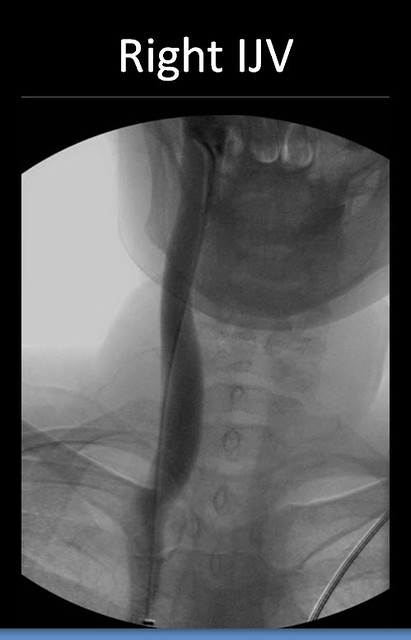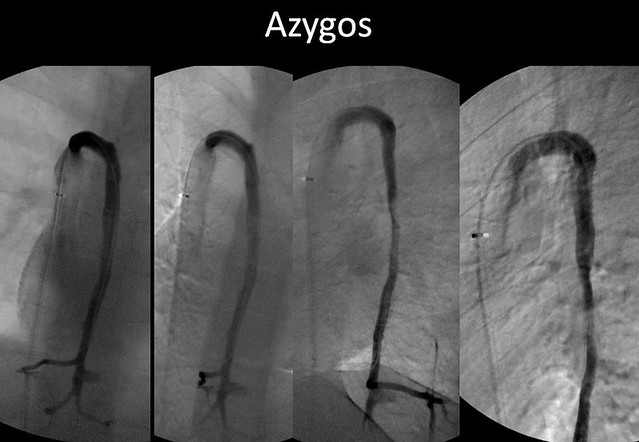Page 1 of 8
PATIENTS AND CAREGIVERS DISCUSS THE PHYSICIAN DISCUSSION
Posted: Tue Jan 11, 2011 11:50 pm
by drsclafani
I desire that patients learn from a healthy debate among physicians. Interjection by patients may inhibit this. That is why i am proposing a separate thread for discussion of what transpires in a dialogue between physicians. Not wanting to in any way inhibit patients who have driven this discussion with patients and physicians i thought this would allow all to lurk or be heard.
the learning curve
Posted: Wed Jan 12, 2011 5:19 am
by Rosegirl
Dr. Sclafani,
As more doctors start doing treatment for CCSVI, patients are understandably concerned about their competence. The doctors who have led the pursuit of CCSVI treatment have discussed how doing this kind of venogram has yielded unexpected findings, required innovations in treatment and the development of new tools (like stents, etc.).
I spoke recently to a doctor who has been an IR for a couple of decades. He was very excited about doing his first CCSVI treatment and seemed very comfortable with his skill set. As a patient, I'm looking for a way to balance his confidence based on his experience with the unknown factors that you and others have dealt with.
I assume one of the outcomes of the meetings planned for IRs this month and in March is to produce some sort of standardized treatment plan so new practitioners don't have to reinvent the wheel and study data can be gathered for future research.
Could you please put the learning curve into perspective for us? For example, is it like a car mechanic having to learn how to service a bus? There are some similarities, but "patient" is significantly different, he must use a larger garage and requires metric tools for treatment instead of his traditional ones.
Or is it more subtle, like the doctor has been baking cookies and now has to learn how to bake a cake? He still is using the same basic ingredients like the flour, sugar, mixing bowls and an oven, but now he has to learn to use a different kind of baking pan, using a different oven temperature and he has to learn about icing (meds).
How much/how long does this training take? Is it a couple of hours reviewing written material and viewing images of treatments? Or does it really take "co-piloting" to learn in the clinic while procedures are being done?
Gratefully,
Rosegirl
Posted: Wed Jan 12, 2011 6:30 am
by Rokkit
I am very excited about the thread you have started, Dr. Sclafani. I plan to lurk with dogged determination.

Posted: Wed Jan 12, 2011 7:06 am
by SaintLouis
Fantastic idea, I too will be quietly lurking.
Posted: Wed Jan 12, 2011 8:09 am
by Cece
I can lurk, really I can.

It's a great idea and I am curious to see what will come of it. I have already learned from Dr. Cumming's recent contributions to the site. With CCSVI not fully explored yet, disagreement among the doctors is to be expected.
Posted: Wed Jan 12, 2011 10:25 am
by HappyPoet
Thank you, Dr. Sclafani, for taking CCSVI and TIMS to the next level... by creating one place for uninterrupted dialogue between doctors and by creating another place where patients and caregivers can discuss what's being discussed by the doctors. Brilliant.

Posted: Wed Jan 12, 2011 1:13 pm
by belsadie
You are incredible, Dr. Sal [I hope you don't mind the tag. Anyone who cares for us the way you do is like, no IS, family]
Great idea for us and the docs..............
Re: PATIENTS AND CAREGIVERS DISCUSS THE PHYSICIAN DISCUSSION
Posted: Wed Jan 12, 2011 1:28 pm
by DrCumming
drsclafani wrote:I desire that patients learn from a healthy debate among physicians. Interjection by patients may inhibit this. That is why i am proposing a separate thread for discussion of what transpires in a dialogue between physicians. Not wanting to in any way inhibit patients who have driven this discussion with patients and physicians i thought this would allow all to lurk or be heard.
Sal, it would be great to have a way to post and discuss cases and management. A more modern day angio club for CCSVI.
Posted: Wed Jan 12, 2011 1:38 pm
by EJC
I've emailed Emma's Surgeon (Dr Reid) and sent him a link to the thread in a hope that he has the time to join us.
Oh and I like Rosegirls analogies, putting questions into laymans terms is always helpful.
disussion
Posted: Wed Jan 12, 2011 3:54 pm
by zinamaria
Is there anything you don't think of?
This is simply another pioneeer move on your part, Dr. Sclafani.
Thank you. I am a lurker too!
zina
Posted: Wed Jan 12, 2011 7:42 pm
by soapdiva884
Oh I am soooo lurking

What a wonderful idea and I can not wait to see what transpires on the physician thread

Case study #1
Posted: Wed Jan 12, 2011 11:06 pm
by drsclafani
The patient is a 33 year old female with short term memory deficiencies, cognitive dysfunction, fatigue, headaches, and imbalance. She has numbness in both hands and the soles of both feet and temperature intolerance. Weakness is predominantly in the lower extremities. She has moderate spasticity, which is worse in the morning. She has co-morbidities of rheumatoid arthritis and multiple sclerosis.
Doppler and B-mode ultrasound of the neck in supine and erect positions and transcranial doppler of the deep cerebral veins was positive for more than one criteria and consistent with CCSVI.
Venography was performed via a left femoral approach.




[/img]
what is your interpretation?
What would be your next step?
Lurk away and learn
Re: Case study #1
Posted: Thu Jan 13, 2011 7:00 am
by Cece
Oh what fun.
The right jugular looks good except for I'd take a closer look in the proximal area with IVUS.
I find it hard to interpret azygous images, so I'd defer to my supervising physician on that (and really on all of this). But I would ask him about the apparent narrowing midway down and the apparent lack of issues up on the arch itself, since that is an area I'd expect to find something.
I would note that the ascending lumbar looks abnormal but would not treat in that area, the veins are too small and the association with CCSVI or MS too uncertain.
The left jugular, is that hypoplastic? Or is the technical term 'a mess.' I'd balloon starting from the bottom, going up, after double-checking drsclafani's thread for what balloon sizes and pressures he's used in hypoplastic veins and repeat ballooning or adjusting sizes and pressures on whatever waisting is found, but with the issues near the skull base I'd leave alone. I would not expect too good of results with that one but perhaps would be surprised.

(please note that I expect to be wrong and most definitely am not a doctor)
Posted: Thu Jan 13, 2011 11:27 am
by civickiller
Right IJV looks fine. The left IJV looks like up at the base of the skull, by C1 there's stenosis resulting in spider veins and down the left IJV by shoulder height there appears to be spidering. normal i dont know.
For the Left IJV up by the base of the skull I would recommend upper cervical care to relieve any pressure the bones might be putting on the Left IJV. More down on the Left IJV shoulder height, I would check for CTOS, if its not CTOS then ballon to open it up
azygos appears normal but like cece said that narrowing midway down might cause some suspision, i would check it out just to make sure
Posted: Thu Jan 13, 2011 3:49 pm
by Cece
So will Dr. Sclafani still be a Rockstar when he is 88?



 [/img]
[/img]